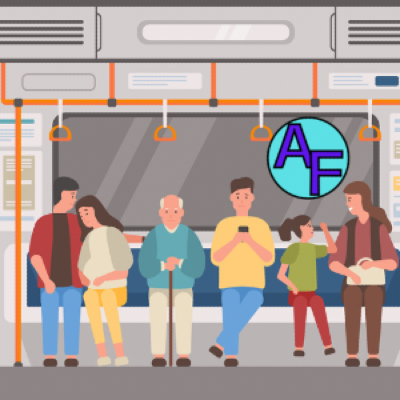Cost-Benefit Analysis in transportation should account for gender—and the climate

"Most transport systems were explicitly designed for the solo male commuter," says Jemilah Magnusson, a spokesperson for the Institute for Transportation and Development Policy, in an interview with Wired.
On Philadephia’s SEPTA 65 percent of its transit users are women on New Jersery’s NJ Transit approximately 55 persent of its transit users are women, yet neither system proportionately puts resources into that very large demographic.
Cost-benefit analysis (CBA) is a required step in most infrastructure projects, whether for construction or demolition. It is intended to provide an objective evaluation of a project by weighing its costs against its benefits, including opportunity costs and quality-of-life impacts. For instance, analysts might assign monetary values to factors like the benefits of improved air quality or the long-term costs of climate change in a city.
Yet, CBAs often reinforce the status quo, masking biases under a guise of objectivity. This tool is frequently used to justify decisions quickly, sidelining the perspectives of the communities most affected by infrastructure projects.
The Gender Gap in Transportation
Women are the primary users of public transit, less likely to own cars at 35 percent of car owners, and more likely to engage in trip-chaining—combining multiple errands into one outing. Unlike the linear commutes typical of men (e.g., home to work and back), women’s trips often involve dropping off children at school, picking up coffee, commuting to work, running errands, going the long way to avoid uncomfortable situations, and returning home with groceries or prescriptions.
Trip-chaining demands infrastructure that supports walking and cycling, yet the majority of CBAs prioritize the needs of 9-to-5 workers, who are disproportionately men and not primary caregivers. For example, bus schedules often center on peak hours—morning and evening commutes—while off-peak services remain sparse, limiting accessibility for unorthodox schedules.
Moreover, CBAs frequently overlook the economic contributions of unpaid domestic labor, which is often performed by women. A homemaker, for example, is rarely accounted for in transit forecasting, as she doesn’t fit the orthodox commuter profile.

Addressing the Bias
U.S. CBAs often reflect a "gender-neutral" approach that defaults to a white, male-centric perspective. This narrow lens makes it difficult to account for factors that have been denied an established monetary value, such as the hidden costs of car dependency or the value of pedestrian-friendly infrastructure.
To address these gaps, planners could implement two critical steps before conducting a CBA:
Gender-Disaggregated Data Collection: This involves collecting and analyzing data separately for women, men, and gender-diverse individuals. Such data helps highlight differences in social and economic dimensions that standard CBAs often ignore.
Intersectional Analysis: This approach considers overlapping factors—such as race, gender, socioeconomic status, disability, and education—that shape individual experiences. It moves beyond isolated metrics to provide a more holistic understanding of who benefits from a project and who bears the costs.
A Path Forward
Metro Los Angeles in 2019 became the first transit agency in the U.S. to use gender-disaggregated data and currently NJ Transit is in the middle of compiling similar data. They both need to add intersectional analysis that takes into account the climate crisis to get an even fuller picture.
Incorporating gender-disaggregated data and intersectional analysis into transportation planning could reshape CBAs to better reflect the realities of diverse populations. These steps would help planners identify and amplify behaviors that support sustainable transit modes like walking, cycling, and public transportation while reducing car dependency.
For example, CBAs could more accurately account for the public costs of private car ownership, such as road maintenance, urban sprawl, and increased water runoff. They could also assign value to the often-overlooked labor of caregiving, which supports the economy in less visible but critical ways.
While these analyses are complex and require specialized expertise, failing to account for these factors perpetuates social inequities and topical ignorance in U.S. transportation planning. By expanding the scope of CBAs, we can begin to address the systemic biases that undermine sustainable and equitable infrastructure development.






